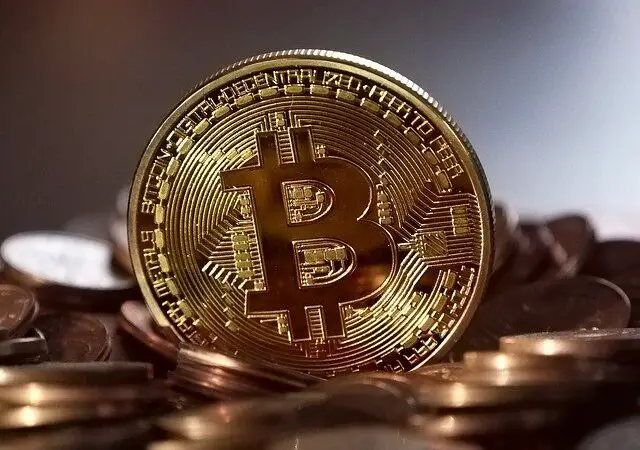What are Bitcoins?

What are Bitcoins?
Bitcoin is a decentralized digital money that was first introduced in January of 2009. It is based on ideas presented in a white paper by Satoshi Nakamoto, a mysterious and pseudonymous figure. The identity of the individual or people behind the technology is still unknown. Bitcoin promises reduced transaction fees than existing online payment methods, and it is run by a decentralized authority, unlike government-issued currencies.
Bitcoin is classified as a cryptocurrency since it is protected by encryption. There are no real bitcoins; instead, balances are recorded on a public ledger that anyone can see (although each record is encrypted). A large amount of computational power is used to verify all Bitcoin transactions, a process known as “mining.” Bitcoin is not issued or backed by any banks or governments, and a single bitcoin has no monetary value. Despite the fact that Bitcoin is not legal cash in most parts of the world, it is extremely popular and has sparked the creation of hundreds of rival cryptocurrencies known as altcoins. When Bitcoin is exchanged, it is typically abbreviated as BTC.
Understanding Bitcoin
Bitcoin is not only the first cryptocurrency, but it is also the most well-known of the over 5,000 cryptocurrencies currently in use. Bitcoin has become an inextricable part of the landscape, with financial media breathlessly covering each new dramatic high and stomach-churning collapse. The Bitcoin system consists of a network of computers (also known as “nodes” or “miners”) that execute Bitcoin’s code and store its blockchain. A blockchain can be conceived of as a collection of blocks in metaphorical terms. Each block contains a set of transactions.
No one can trick the system because all computers running the blockchain have the same list of blocks and transactions and can observe these new blocks as they’re filled with fresh Bitcoin transactions in real-time. These transactions may be seen in real-time by anyone, whether or not they run a Bitcoin “node.” To carry out a criminal deed, a bad actor would need to control 51 percent of Bitcoin’s computational power. As of mid-October 2021, Bitcoin has roughly 13,950 complete nodes, and this number is growing, making such an attack extremely implausible.
However, if an attack were to occur, Bitcoin miners—those who participate in the Bitcoin network via their computers—would most likely splinter off to a different blockchain, rendering the bad actor’s attempt futile. Public and private “keys,” which are long sequences of numbers and letters linked by the mathematical encryption method that creates them, are used to keep track of Bitcoin token balances. The public key (which is similar to a bank account number) is the address that is made public and to which others can send Bitcoin.
The private key (which functions similarly to an ATM PIN) is designed to be kept private and is only used to authorize Bitcoin transactions. A Bitcoin wallet, which is a physical or digital device that facilitates bitcoin trade and allows users to monitor ownership of coins, should not be confused with bitcoin keys. The name “wallet” is a misnomer because Bitcoin is never held “in” a wallet, but rather distributed on a blockchain due to its decentralized nature.
Peer-to-Peer Technology
Bitcoin was one of the first digital currencies to make use of peer-to-peer (P2P) technology to allow for immediate transactions. Bitcoin “miners,” who own the governing computing power and participate in the Bitcoin network, are responsible for processing transactions on the blockchain and are motivated by rewards (the production of new Bitcoin) and transaction fees paid in Bitcoin.
How high can it go?
While the high volatility may make for interesting headlines, it hardly qualifies Bitcoin as the ideal option for new investors or those seeking a reliable store of wealth. It can be difficult to figure out the ins and outs. Bitcoin’s value has skyrocketed since its initial public offering in 2009. Despite the fact that it once traded for less than $150 per coin. One Bitcoin was sold for approximately $50,000 on March 1, 2021. Because there are only 21 million coins available. After March 2021, the price continued to rise, reaching almost $60,000 before depreciating. And, most recently, in October of 2021, it reached a very high rate of around $67,000.
Many people believe its price will continue to rise over time, particularly as more major, institutional investors begin to regard it as a kind of digital gold to protect against market volatility and inflation.
Let’s take a look at some of the earlier financial experts’ analyses and predictions; Kiana Danial, CEO of Invest Diva, also chimed in with an analysis that uses the Ichimoku Cloud, a technical indicator that incorporates multiple averages to help provide a better sense of an asset’s overall trend and momentum. “BTC/USD has completed a double bottom chart pattern, breaking above the daily Ichimoku cloud and reaching the important resistance level of $55K,” she said. “We have lots of positive indicators indicating Bitcoin might re-visit the $58K and $65K highs from earlier this year,” Danial continued.
StockCharts.com’s top market strategist, David Keller, shared a similar viewpoint. From a technical standpoint, the break over the 50K mark is noteworthy, and a return to former highs around 64K looks likely in the fourth quarter as long as Bitcoin holds above this crucial support level. Fairlead Strategies, LLC’s founder and managing partner, Katie Stockton, also added her two cents. These predictions have come true, and given the market’s erratic swings, it’s still possible that Bitcoin may continue to rise above its current price.
Microsoft, PayPal, Overstock, Whole Foods, Starbucks, and Home Depot are among the few major corporations that accept bitcoin directly or indirectly through a third-party digital wallet program. Many analysts regard bitcoin as a value store, similar to gold, rather than money.
Conclusion
Despite the cryptocurrency’s dramatic price swings and the controversy surrounding its environmentally unfriendly energy usage, billionaire venture capitalist and Bitcoin investor Tim Draper is sticking to his prediction that bitcoin will hit $250,000 by the end of 2022 or early 2023. Draper tells CNBC, “I think I’m going to be correct on this one.” “After then, I believe [bitcoin] will continue to rise since there are only 21 million of them,” Draper says. Only 21 million bitcoins can be “mined” according to the code. More than 18 million bitcoins have already been distributed.


